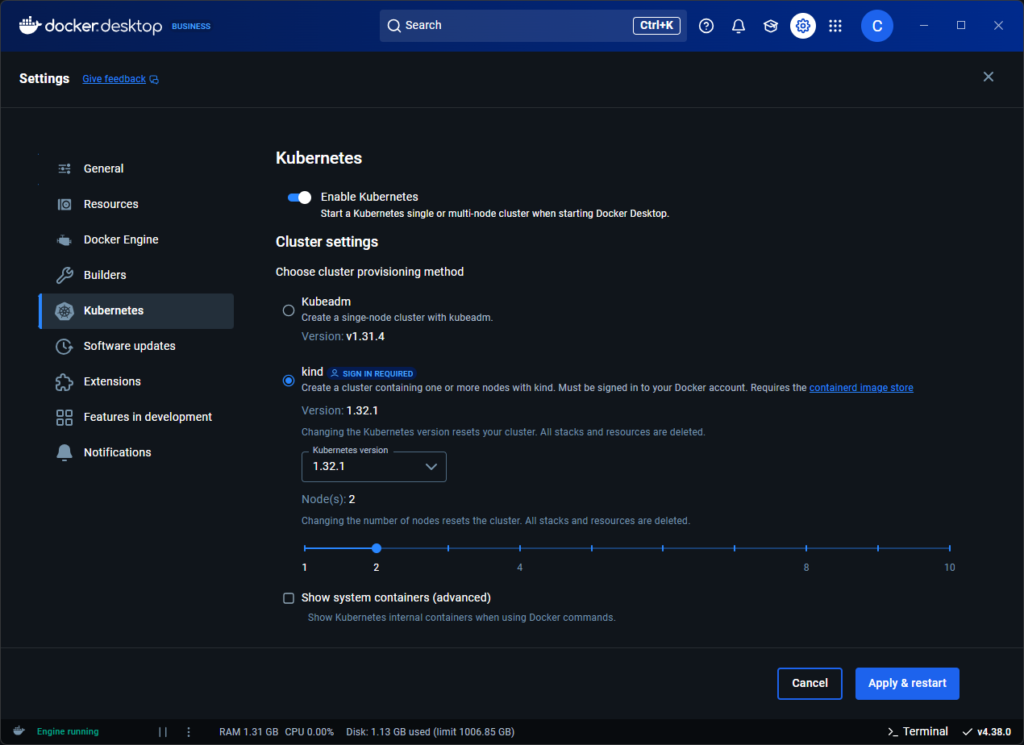---
description: See how you can deploy to Kubernetes on Docker Desktop
keywords: deploy, kubernetes, kubectl, orchestration, Docker Desktop
title: Deploy on Kubernetes with Docker Desktop
linkTitle: Deploy on Kubernetes
aliases:
- /docker-for-windows/kubernetes/
- /docker-for-mac/kubernetes/
- /desktop/kubernetes/
weight: 60
---
Docker Desktop includes a standalone Kubernetes server and client, as well as Docker CLI integration, enabling local Kubernetes development and testing directly on your machine.
The Kubernetes server runs as a single or multi-node cluster, within Docker container(s). This lightweight setup helps you explore Kubernetes features, test workloads, and work with container orchestration in parallel with other Docker functionalities.
Kubernetes on Docker Desktop runs alongside other workloads, including Swarm services and standalone containers.

## What happens when I enable Kubernetes in Docker Desktop?
The following actions are triggered in the Docker Desktop backend and VM:
- Generation of certificates and cluster configuration
- Download and installation of Kubernetes internal components
- Cluster bootup
- Installation of additional controllers for networking and storage
Turning the Kubernetes server on or off in Docker Desktop does not affect your other workloads.
## Install and turn on Kubernetes
1. Open the Docker Desktop Dashboard and navigate to **Settings**.
2. Select the **Kubernetes** tab.
3. Toggle on **Enable Kubernetes**.
4. Choose your [cluster provisioning method](#cluster-provisioning-method).
5. Select **Apply & Restart** to save the settings.
This sets up the images required to run the Kubernetes server as containers, and installs the `kubectl` command-line tool on your system at `/usr/local/bin/kubectl` (Mac) or `C:\Program Files\Docker\Docker\resources\bin\kubectl.exe` (Windows).
> [!NOTE]
>
> Docker Desktop for Linux does not include `kubectl` by default. You can install it separately by following the [Kubernetes installation guide](https://kubernetes.io/docs/tasks/tools/install-kubectl-linux/). Ensure the `kubectl` binary is installed at `/usr/local/bin/kubectl`.